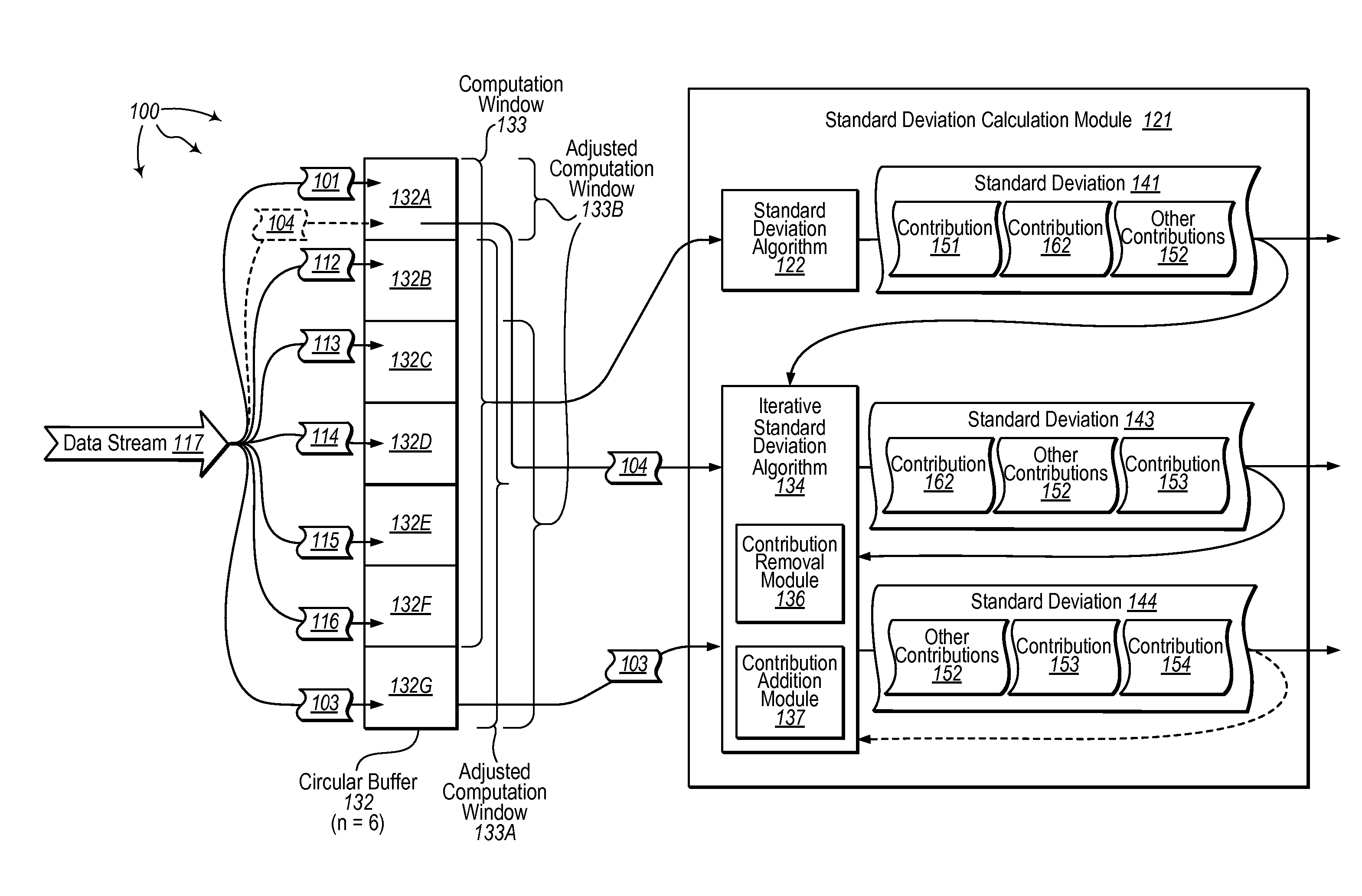Iteratively calculating standard deviation for streamed data
a technology of streamed data and standard deviation, applied in the direction of transmission, complex mathematical operations, electrical equipment, etc., can solve the problems of time-consuming, unfavorable statistical calculation of streamed data elements, and large buffer requirements
- Summary
- Abstract
- Description
- Claims
- Application Information
AI Technical Summary
Benefits of technology
Problems solved by technology
Method used
Image
Examples
Embodiment Construction
[0023]The present invention extends to methods, systems, and computer program products for iteratively calculating standard deviation for streamed data. A computer system includes a buffer for storing streamed data elements. A buffer window length indicates a specified number of streamed data elements for filling computation windows for the buffer.
[0024]The computer system accesses streamed data elements for a computation window of the buffer. The streamed data elements include an earlier (and possibly initial) streamed data element and one or more additional streamed data elements. The earlier streamed data element was received prior to the one or more additional streamed data elements. The computer system calculates a standard deviation for the computation window from the earlier streamed element and one or more additional streamed elements.
[0025]The computer system receives a new streamed data element subsequent to receiving the one or more additional streamed data elements. The ...
PUM
 Login to View More
Login to View More Abstract
Description
Claims
Application Information
 Login to View More
Login to View More - R&D
- Intellectual Property
- Life Sciences
- Materials
- Tech Scout
- Unparalleled Data Quality
- Higher Quality Content
- 60% Fewer Hallucinations
Browse by: Latest US Patents, China's latest patents, Technical Efficacy Thesaurus, Application Domain, Technology Topic, Popular Technical Reports.
© 2025 PatSnap. All rights reserved.Legal|Privacy policy|Modern Slavery Act Transparency Statement|Sitemap|About US| Contact US: help@patsnap.com



